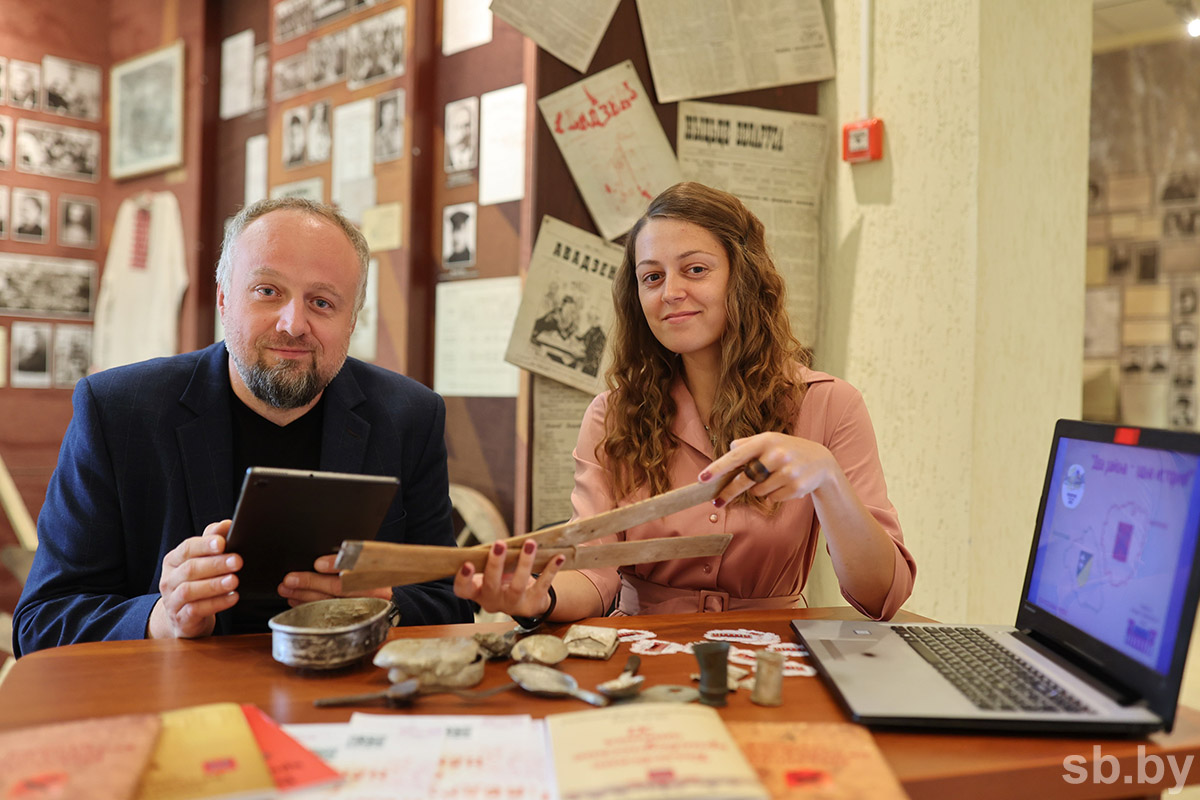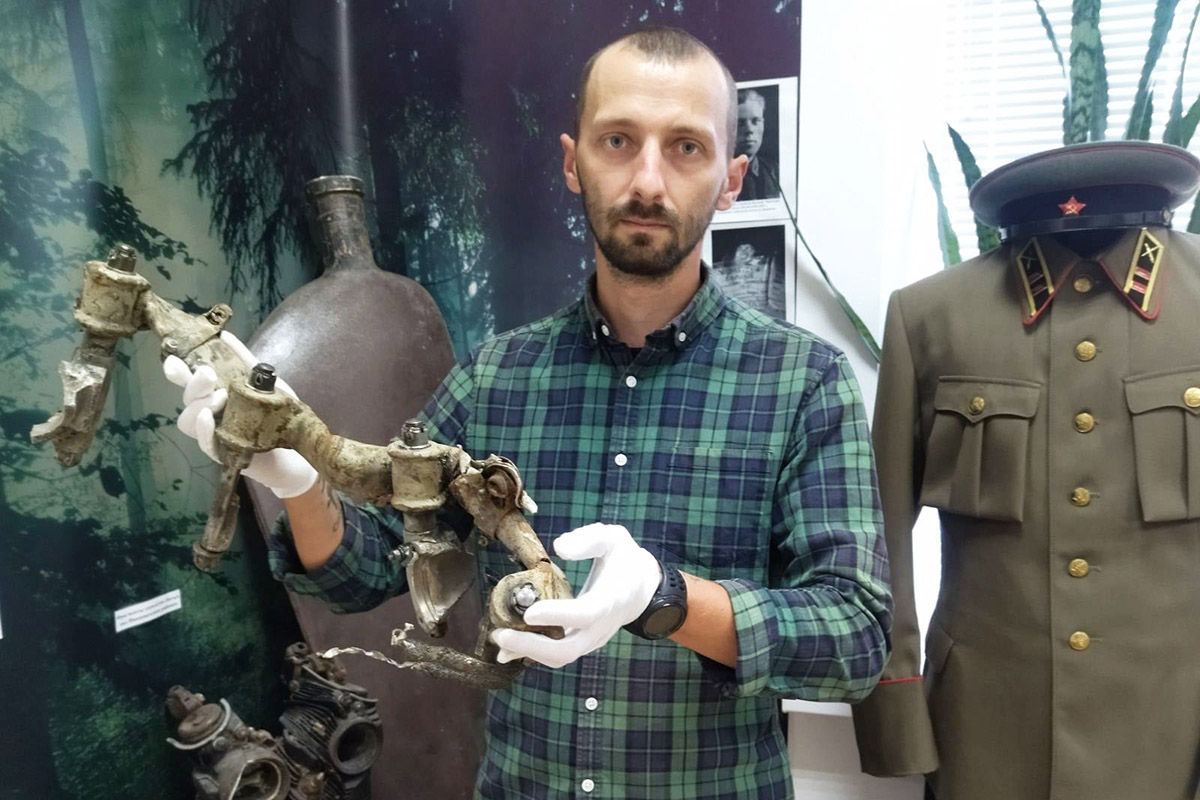
Iconic parallels
The main goal of the initiative called “Two districts - one history,” which was co-authored and promoted by employees of the Bykhovsky and Ivatsevichi regional historical museums, is patriotic education. They present history through interesting facts, events, and personalities. Posts are posted on the social networks VKontakte, Odnoklassniki, Instagram, and on the website museum.by, because they are convinced that the online project is a relevant form of interaction between museums and society.
There's a lot in common
“ The idea of the project, which had been in the air for several years, took on real shape at the end of 2022 ,” says Sergei Zhizhiyan, director of the Bykhovsky Regional Museum of History and Local Lore . — During advanced training courses for museum workers at the Belarusian State University of Culture and Arts, I met the head of the Khovanshchina memorial complex of partisan glory, a branch of the Ivatsevichi Museum of History and Local Lore, Sergei Mochalov .
We talked and understood: even though there are more than 350 kilometers between our cities and each has its own ethnocultural characteristics, there are quite a lot of common historical facts and events. Since February, through an online project, we have been telling people about parallels in the history of the regions.
Thus, in the Mogilev and Brest regions, fragments of the Sapieha empire have been preserved: the castle in Bykhov and the palace complex of magnates in Ruzhany. In Bykhov there is a Holy Trinity Church built in the mid-19th century, and in the Ivatsevichi district, in Kosovo, there is a Church of the Holy Trinity, dating back to 1626.
Last summer, a memorial complex “Partisan camp Badgers” was opened in the Bykhovsky district. In Ivatsevichi there is a memorial complex of partisan glory “Khovanshchina”.
In 2022, at the Bykhov local history readings, in which Belarusians and Russians participate, local museum workers learned: a Soviet bomber that took off from their airfield on June 25, 1941 crashed in the Ivatsevichi region.
Brotherly helping hand
The plane, which bombed German tanks in the area of the Brest-Pruzhany highway, was attacked by fascist Messerschmitts, caught fire in an unequal battle and, like a wounded bird, fell down. Of the three crew members, only the gunner-radio operator, Russian Nikolai Ermolaev, miraculously survived. Later he would write to war correspondent Sergei Smirnov how, on the orders of the commander, he fell overboard and, not having time to use a parachute, fell into the forest, broke his spine, both legs, and lost consciousness: “The residents of St. Volya found me, risking their lives, and hid me in a village occupied by the Germans. , then secretly transported to the Pinsk City Hospital. After the arrest and execution of her doctors, I, plastered from head to toe, was taken by the Gestapo to a concentration camp, from where I was released in August 1944 during our offensive operation.
“ They are buried in the village of Telekhany, ” Sergei Mochalov clarifies. “ And the crash site was found in 2018 by members of the historical and patriotic search team “Aviapoisk-Brest.” Fragments of the plane are now stored in our museum.
Two Krasnitsa
In the Ivatsevichi and Bykhov districts, villages of the same name were burned by the occupiers. Krasnitsa in the Mogilev region was razed to the ground on July 17, 1942, killing 857 civilians. Six-year-old Antonina Rudakova was saved by her brother Kolya: “We hid in the underground under the bed, the blood of our relatives, torn to pieces by the Nazis, dripping on us through the floorboards.” The village was later reborn. But Krasnitsa in the Ivatsevichi region, where 90 people were killed on September 10, 1942 during the punitive operation “Swamp Fever”, is not. In its place is a monument to the victims of genocide.

Virtual and real
The advantage of the online project is that virtual visitors can see digitized exhibits from museum reserves. The Bykhovsky and Ivatsevichi museums have something to show: their funds, respectively, number more than seven and more than six thousand exhibits.
— To make it easier for users to find our posts, we upload them to social networks and to the website museum.by on Wednesdays. Next week we will publish the 30th one, we already have more than 60 thousand views ,” says researcher at the Bykhov Museum Evgenia Fedorchuk . — The topics are different - from antiquity to the present day. And judging by the views and reviews, they are interesting .
To promote the project, Evgeniya developed a poster, logo and hashtags #two-district_onestory and #bykhov_ivatsevichi.
— The poster uses the outlines of two districts as a basis, with the coats of arms of Bykhov and Ivatsevichi as accents. The dominant color of our coat of arms is red, theirs is green. If we consider that the basis of the project is unity, they, symbolically echoing the colors of the national flag, are successfully woven into the overall patriotic outline, ” Evgeniya focuses on the details.
Sergey Zhizhiyan, in turn, draws attention:
“ With our project we want to show that no matter how they try to separate us, we remain one nation, one people, with common traditions, culture, history.
The project will not be limited to virtual space. The director of the Ivatsevichi Regional Museum of History and Local Lore, Raisa Gorbach , is convinced of its great future , and she also announced plans to organize exchange exhibitions in the future. Already this year, researchers will conduct an online survey to find out which exhibits have generated the most interest. Taking this into account, the work will be adjusted and taken beyond the traditional museum vision.